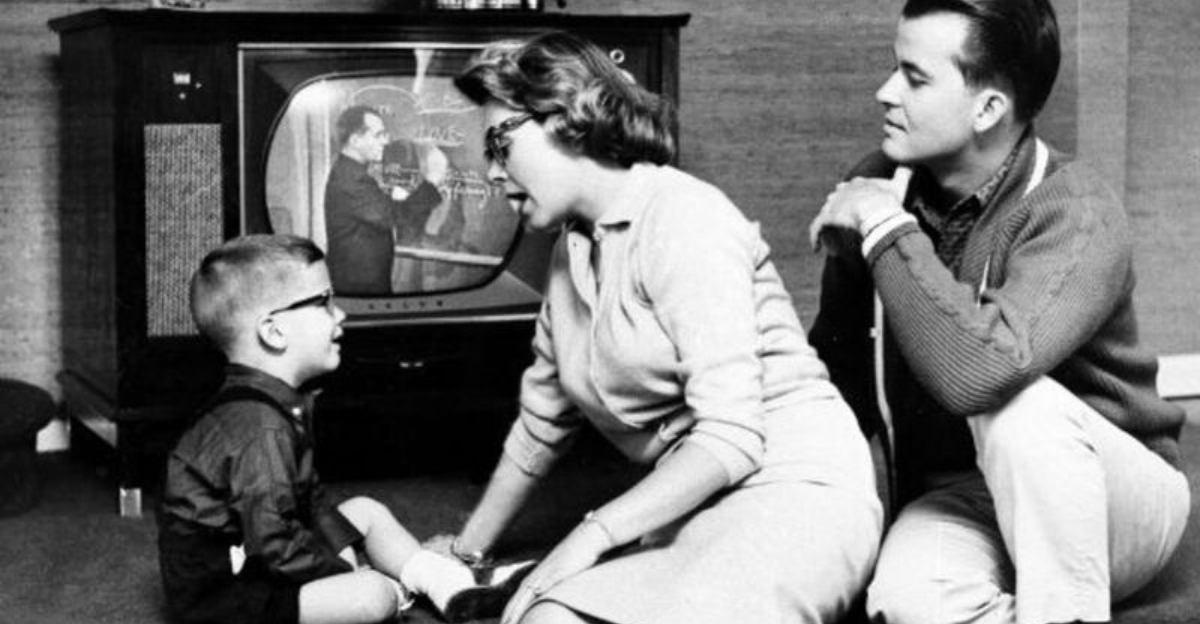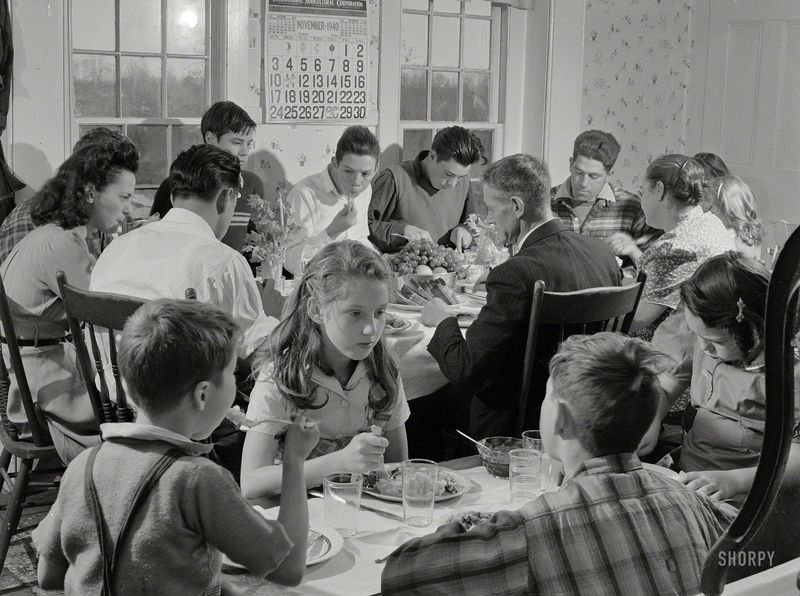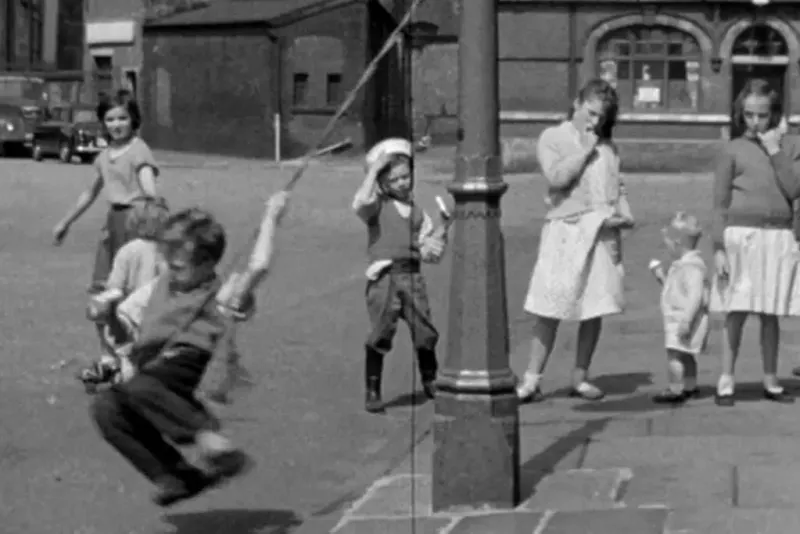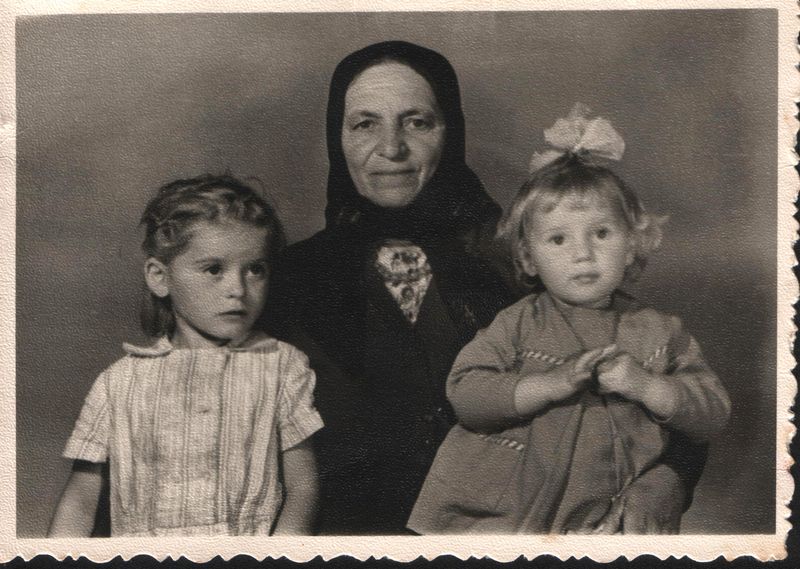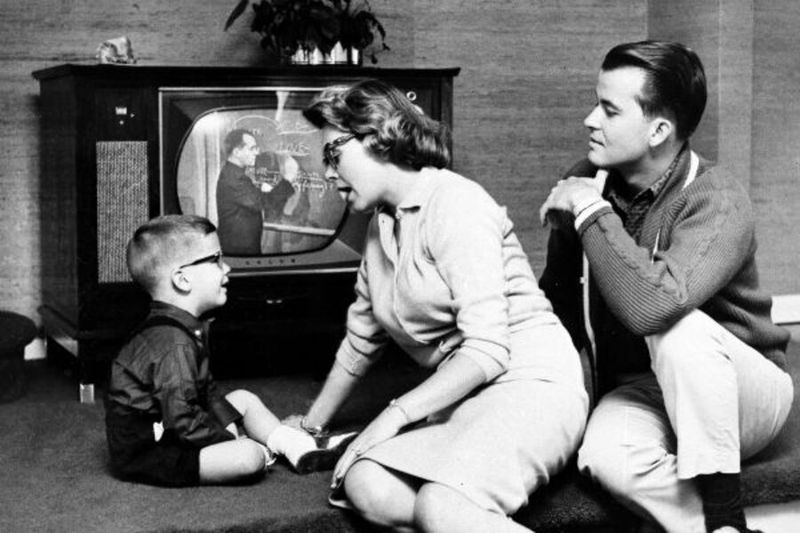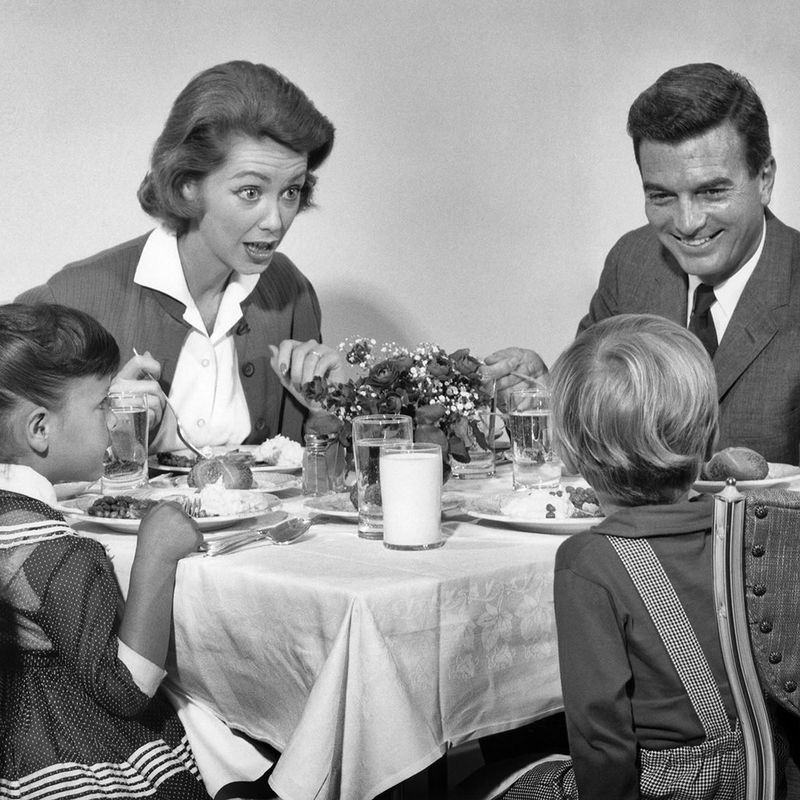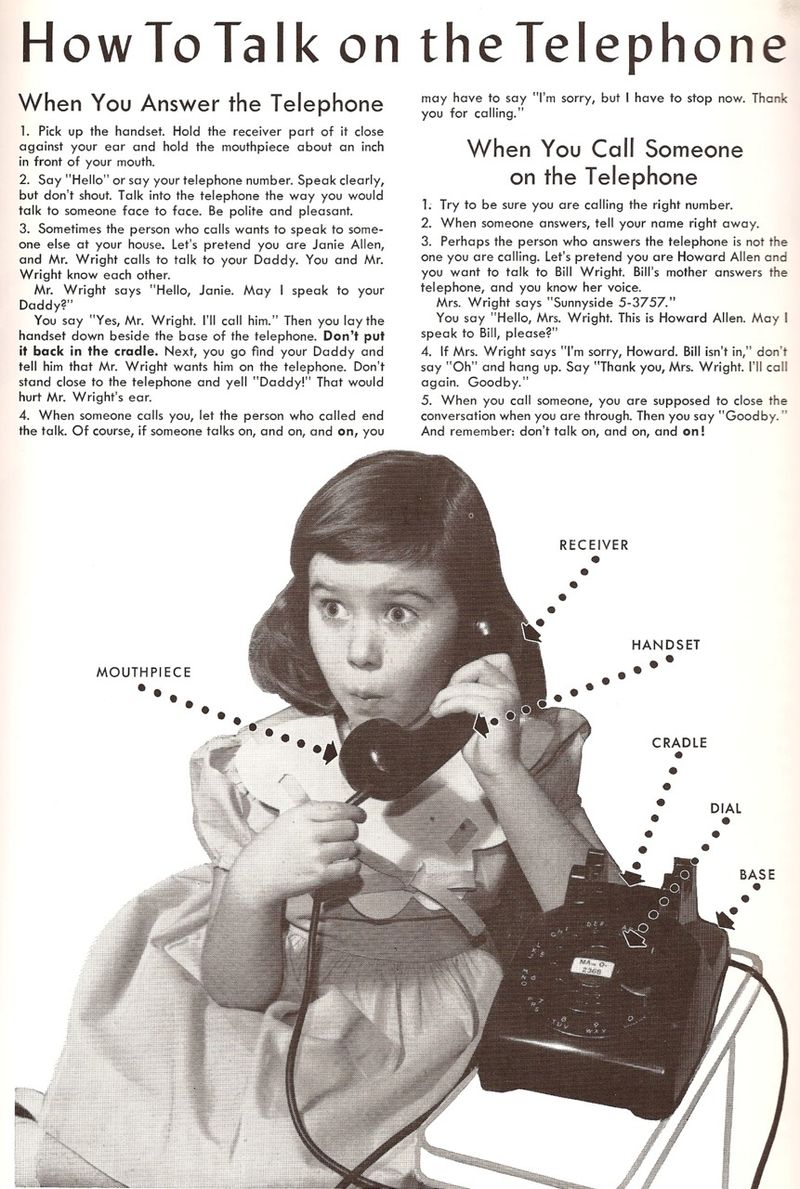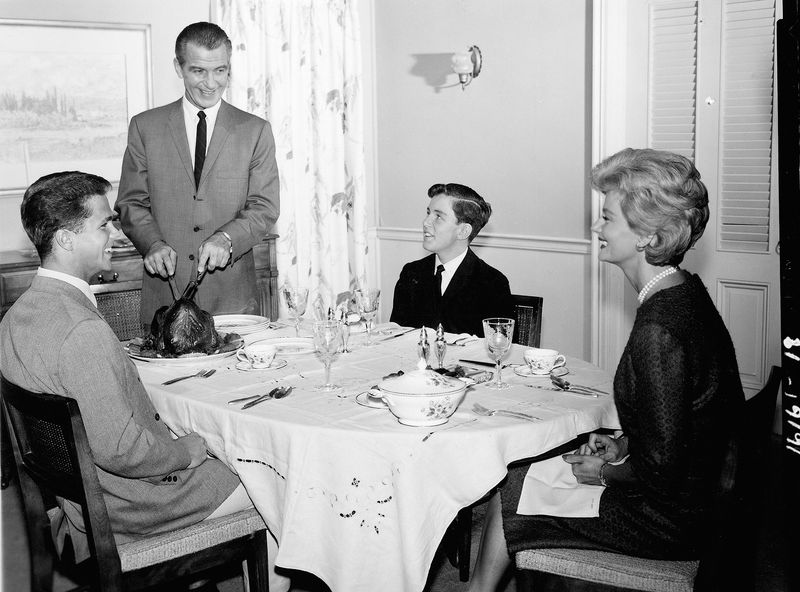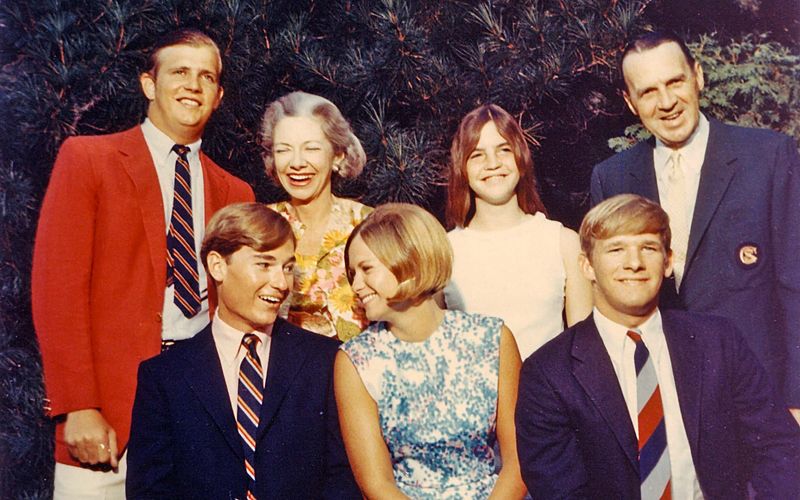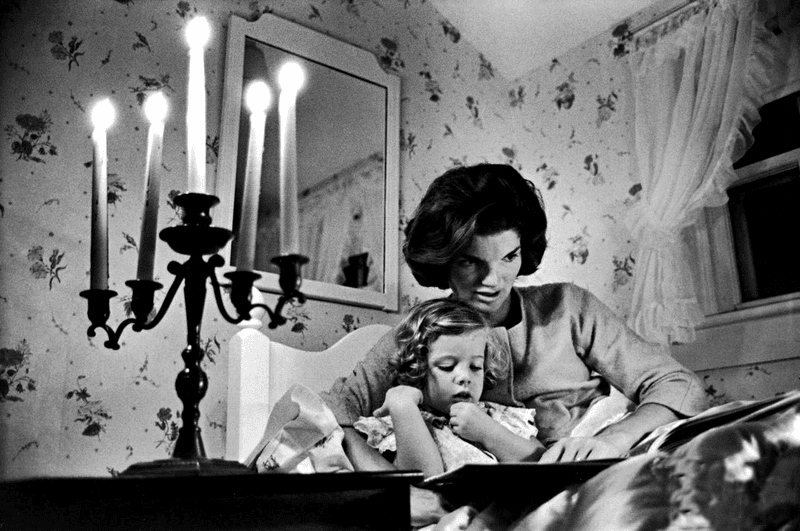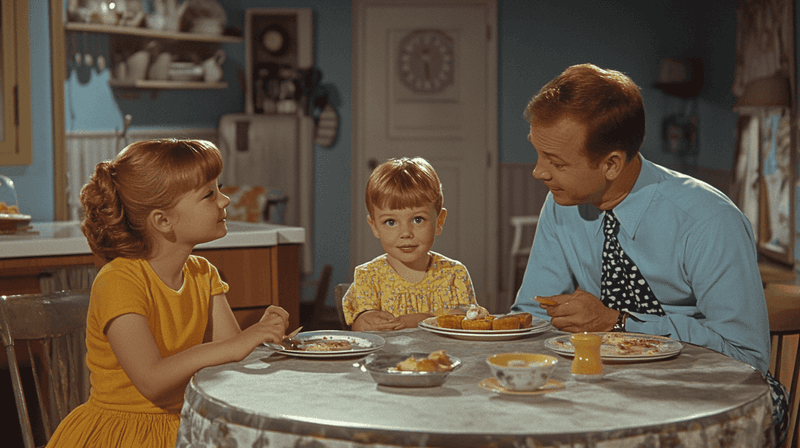The 1960s was a time of significant social change, yet many families clung to traditional house rules. These guidelines were more than just instructions; they were a way to maintain order and instill values. Each rule carried its own story, reflecting the era’s expectations and the unique dynamics of family life. In this blog post, we explore 15 such rules that were common in households during the ‘60s, each with its own flavor and character. From dinner table etiquette to curfew times, these rules shaped daily life and left a lasting impression on those who lived by them.
1. No Elbows on the Table
Imagine a family gathered around the dinner table in the 1960s, a scene filled with chatter and clinking cutlery. Amidst this bustling environment, one rule stood firm: no elbows on the table. This wasn’t just about manners. It was about discipline and respect for shared space. The ritual of dining together was sacred, a time when families connected and shared stories. Parents believed proper etiquette taught children to be considerate and aware of others. It was a lesson that extended beyond the dining room, shaping how they interacted in the world.
2. Curfew Enforced Strictly
In the ’60s, curfews were more than guidelines; they were law in many households. Picture a teenager glancing nervously at the clock, knowing they had to be home by 10 PM sharp. This rule was about safety and trust. Parents wanted to ensure their children were out of harm’s way, a reflection of their care. It was also a test of responsibility, teaching youngsters to manage time wisely. Curfews created a sense of predictability and structure, essential for family harmony in a rapidly changing world.
3. Chores Before Play
Chores before playtime was a universal decree in the ’60s households. With a broom in hand, children learned the value of hard work. This rule wasn’t just about keeping the house tidy; it was a lesson in responsibility. Parents believed that by contributing to household tasks, children developed a sense of accomplishment and discipline. It taught them that rewards came after effort. The anticipation of playtime made chores bearable and even enjoyable. This simple rule instilled values that would carry into adulthood, creating a foundation for a strong work ethic.
4. Respect Your Elders
Respecting elders was a cornerstone of family life in the ’60s. Imagine a young person sitting cross-legged on the floor, listening intently to an elder’s story. This rule went beyond mere politeness; it was about valuing wisdom and experience. Elders were seen as the custodians of knowledge and tradition. By showing respect, children learned humility and empathy. This rule fostered intergenerational bonds, creating a family tapestry rich with shared memories. It was a way to ensure that the past was never forgotten, but rather cherished and learned from.
5. Sunday Best for Church
Sunday mornings in the ’60s had a special rhythm. Families dressed in their best attire, ready for church. This rule was about more than just appearance. It was a celebration of community and faith. Wearing Sunday best highlighted the importance of the day and reverence for the occasion. It was a time for families to come together, share in their beliefs, and reconnect with their community. This ritual instilled a sense of pride and belonging, reinforcing the values that were central to family life in that era.
6. Homework Before TV
Ah, the allure of the TV, a fascinating new technology in the ’60s. Yet, one rule reigned supreme: homework always came first. With schoolbooks spread open, children learned to prioritize education over entertainment. This wasn’t just about grades. It was about instilling a love for learning and the discipline needed to succeed. Parents believed that by placing academics first, their children would have a brighter future. This rule taught essential time management skills and emphasized the importance of responsibility, setting the stage for lifelong success.
7. Dinner at Six Sharp
Dinner time was sacred in the ’60s, a non-negotiable family affair set precisely at 6 PM. Gathering around the table, it was more than a meal; it was a ritual of connection. This rule emphasized the importance of family unity and punctuality. Parents valued these moments to catch up, share stories, and instill values. It was a time to reinforce bonds and create lasting memories. The predictability of dinner time provided structure in a world that was often unpredictable, anchoring families in tradition and togetherness.
8. Phone Etiquette Matters
In an era where telephones were a central communication tool, phone etiquette was paramount. Picture a child practicing how to answer a rotary phone with politeness. This rule was about more than just saying ‘hello’; it was about making a good impression. Parents taught their children to speak clearly, listen attentively, and end conversations courteously. These lessons extended beyond the phone, teaching children how to engage respectfully in all interactions. This emphasis on courteous communication laid the groundwork for personal and professional success.
9. No TV During Meals
The TV may have been a wondrous invention, but during meals, it stayed off, an unwritten rule in many ’60s households. Families gathered around the table, savoring not just food but conversation. This rule highlighted the importance of face-to-face interaction and undistracted communication. Mealtime was about connecting, sharing stories, and listening to each other. By keeping the TV off, families reinforced the value of being present and engaged. This practice nurtured relationships and emphasized the significance of togetherness in everyday life.
10. Be Home Before Dark
As the sun dipped below the horizon, children knew it was time to return home. This rule was a staple in ’60s households, emphasizing safety and responsibility. Parents wanted their children home before dark, ensuring they were safe from unknown dangers. This guideline taught children to be aware of their surroundings and manage their time effectively. It was a lesson in independence within the boundaries of parental concern. The rule created a sense of security and order, offering peace of mind to families during uncertain times.
11. Speak When Spoken To
In the formal parlors of the ’60s, children often adhered to the rule: speak when spoken to. This guideline reflected the era’s emphasis on respect and patience. It taught children to listen attentively and understand the importance of timing in conversation. Parents believed this rule nurtured discipline and self-control, qualities admired in society. While it might seem strict by today’s standards, it instilled a sense of decorum and heightened awareness of social cues. The practice emphasized thoughtful communication over impulsive chatter.
12. Weekly Family Meetings
Weekly family meetings were a cherished tradition in many ’60s homes, fostering open communication and unity. Gathered in the living room, parents and children would discuss plans, concerns, and achievements. This rule created a platform for sharing and listening, encouraging active participation from all family members. It was about transparency and collaboration, teaching children the value of teamwork and mutual support. These meetings reinforced family bonds, providing a sense of belonging and understanding. They were an opportunity to align goals and celebrate successes together.
13. Bedtime Stories
Bedtime stories were a nightly ritual in the ’60s, a comforting end to the day. Picture a parent soothingly reading a storybook to a child, voices weaving tales of adventure and wonder. This rule was more than about winding down; it was about nurturing imagination and fostering a love for reading. It created a special bond between parent and child, a moment of closeness and warmth. These stories offered life lessons and sparked creativity, embedding values and dreams in young minds, creating memories that would last a lifetime.
14. Finish What’s on Your Plate
The ‘clean plate club’ was a significant part of ’60s dining culture. Children were encouraged to finish their meals, a rule rooted in respect for food and gratitude. Imagine a child gazing at a full plate, learning to appreciate what was provided. This guideline taught the importance of not wasting resources and acknowledging the effort that went into preparing meals. Parents believed that by adhering to this rule, children would develop a sense of gratitude and an understanding of moderation. It was a lesson in humility and respect for abundance.
15. Politeness is Key
Manners were paramount in the ’60s, with politeness being a cornerstone of family values. Picture a young child attentively learning ‘please’ and ‘thank you’ from a parent. This rule emphasized the importance of courtesy and kindness in daily interactions. Parents instilled these values, believing that polite behavior reflected good upbringing and respect for others. This rule extended beyond the home, shaping how children were perceived in society. It fostered an environment of mutual respect and empathy, laying the foundation for harmonious relationships and social harmony.
